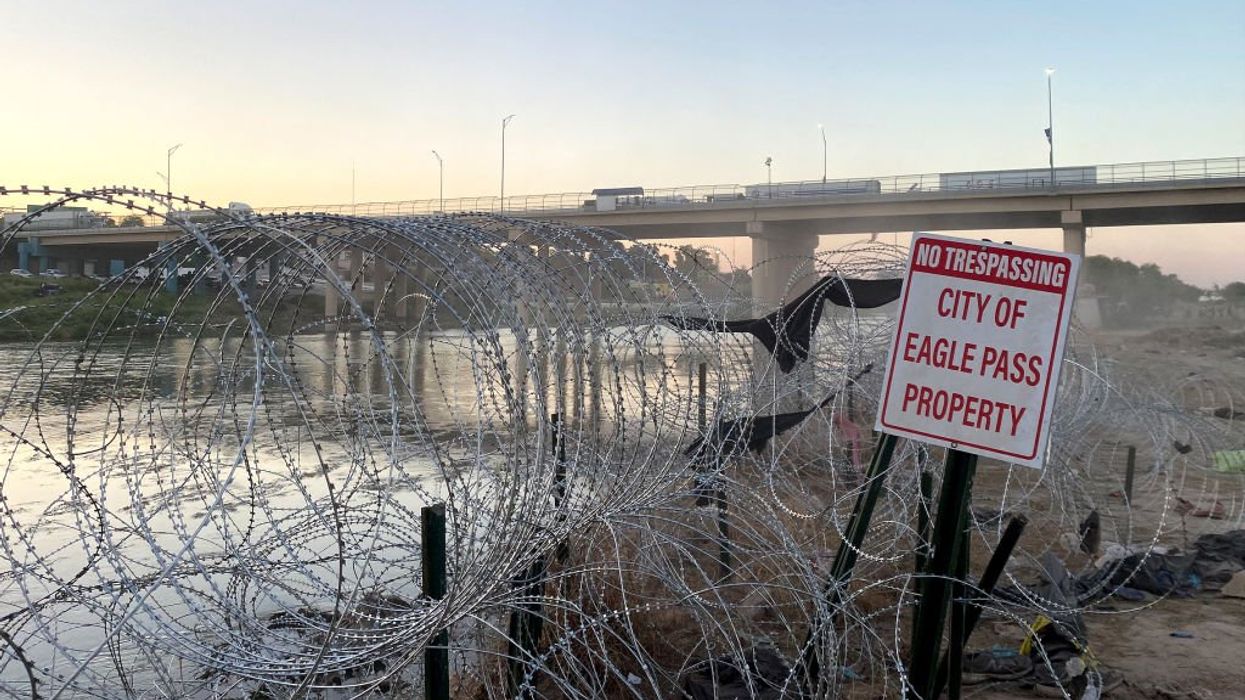
PAULA RAMON/Getty
As migrants pour in, Border Patrol is turning to AI and biometrics, but at what cost?
Our borders are broken, and our leaders are fine with that. At least until January 20, 2025.
Under President Biden’s watch, 8.3 million illegal immigrants have crossed our southern border and now live — somewhere — in the interior of the United States. About a fifth of these “migrants” bear no documentation and were never vetted by any authority.
The companies behind this tech are a who’s-who of the military-industrial complex. The more “secure” the government makes us, the higher the market value of Lockheed Martin, Northrop Grumman, Palantir, et al., grows.
Still, many in Washington pay lip service to border security, if only to secure re-election. Massive amounts are spent each year to strengthen our frontiers with methods old and new. These efforts are popular across party, race, and ideological lines. The only thing missing is the will, both from politicians and the business leaders who fund them.
If Biden is tossed out in November, border enforcement will again become a possibility.
While Trump was first elected shouting “build the wall,” a physical barrier can only mitigate, not eliminate, the influx. Walls can be climbed over, tunneled under, and avoided by air, sea, and ports of entry. By 2016, voters no longer trusted vague promises of virtual fences and demanded something more concrete.
Wall or no, the growing complexity of security threats — terrorism, drug trafficking, cartel violence, hostile foreign infiltration — mean more advanced solutions are needed. Authorities must now monitor, detect, and eliminate broader threats well before crossing the border.
That’s where technology comes in, much of which is already deployed. There has been an explosion in surveillance technology, including drones, sensors, and facial recognition systems. This enables authorities to remotely monitor vast stretches of border areas, detect unauthorized crossings, and identify potential threats with greater accuracy and speed. Companies such as Lockheed Martin, Northrop Grumman, and Elbit Systems have been at the forefront of developing and supplying these technologies to the Department of Homeland Security.
Furthermore, integrating artificial intelligence and machine learning algorithms has enhanced the capabilities of border security systems. These technologies can analyze vast amounts of data in real time, allowing authorities to identify patterns, predict potential threats, and allocate resources more effectively. For instance, predictive analytics software developed by companies like Palantir Technologies helps the DHS anticipate smuggling routes and deploy personnel accordingly.
Additionally, biometric authentication technologies, such as fingerprint and iris scanners, have become integral to border control processes. These systems enable authorities to verify the identity of travelers more securely and efficiently, reducing the risk of document fraud and identity theft. Implementing biometric exit procedures at airports and seaports has improved the tracking of individuals leaving the country, enhancing overall border security.
These advances should be applauded when used to protect our borders. But will they be used or simply ignored for business and political advantage? And what other uses will our federal government find for them? A system used in El Paso can easily be duplicated in San Antonio, Dallas … or Cincinnati — for our protection, of course.
As these new technologies dominate, concerns regarding their potential misuse and impact on civil liberties arise, particularly the risk of a surveillance state. In a choice between security and privacy, there are no solutions, only trade-offs.
U.S. citizens are already subject to much of this tech when returning from abroad by air and sea. Those living near the border often pass through the checkpoints for work, leisure, or a lost weekend in Tijuana.
The companies behind this tech are a who’s-who of the military-industrial complex. The more “secure” the government makes us, the higher the market value of Lockheed Martin, Northrop Grumman, Palantir, et al., grows. Neither Wall Street nor Washington has sufficient incentive to demand privacy for the proles.
Facial recognition technology, particularly, has an incalculable potential for mass surveillance and privacy violations. Add in the collection and storage of biometric data, such as fingerprints and iris scans, that risk misuse not only by the government but by proxies via data breaches.
Soon, the use of AI and predictive analytics will play a major factor in border security, raising obvious questions about algorithmic bias and ideological discrimination. Citizens may argue these concerns with their congressmen; the intelligence community can ignore that input as is all too common.
Advancements in border security technology have improved the ability of authorities to detect and respond to various threats effectively. Biden has simply chosen to ignore their potential. One hopes a President Trump will use them as designed and somehow get the hostile administrative state to follow his direction.
As these technologies become more pervasive, however, it is essential to strike a balance between ensuring national security and safeguarding individual rights. Government agencies must implement robust oversight mechanisms, transparency measures, and privacy safeguards to prevent the misuse of border security technologies and protect the civil liberties of all Americans.
- YouTube youtu.be
Jon Gabriel